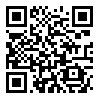مجله رویش روانشناسی از دادن گواهیهای کاغذی معذور است. لطفا تقاضا نکنید. همه گواهی ها در صفحه شخصی کاربران موجود است.
year 14, Issue 5 (Summer 2025 2025)
Rooyesh 2025, 14(5): 53-62 |
Back to browse issues page
Download citation:
BibTeX | RIS | EndNote | Medlars | ProCite | Reference Manager | RefWorks
Send citation to:



BibTeX | RIS | EndNote | Medlars | ProCite | Reference Manager | RefWorks
Send citation to:
Ghasemzadeh M, Shahian H, Bakhshipour Roudsari A. (2025). The mediating role of mindfulness in the relationship between attachment styles and nomophobia among students. Rooyesh. 14(5), 53-62.
URL: http://frooyesh.ir/article-1-5906-en.html
URL: http://frooyesh.ir/article-1-5906-en.html
1- M.A in Clinical Psychology, Department of Psychology, University of Tabriz, Tabriz, Iran.
2- Professor of Clinical Psychology, Department of Psychology, University of Tabriz, Tabriz, Iran. ,abbas.bakhshipour@gmail.com
2- Professor of Clinical Psychology, Department of Psychology, University of Tabriz, Tabriz, Iran. ,
Abstract: (555 Views)
This study aimed to determine the mediating role of mindfulness in the relationship between attachment styles and nomophobia among students. The present research was a descriptive correlational study using structural equation modeling. The statistical population consisted of students from Tabriz University in 2024, with 220 participants recruited through convenience sampling. Data were collected using the Nomophobia Questionnaire (MP-Q; Yıldırım Correia, 2015), the Mindfulness Attention Awareness Scale (MAAS; Ryan Brown, 2003), and the Adult Attachment Questionnaire (AAQ; Hazan Shaver, 1987). Data analysis was conducted using structural equation modelling. The results indicated that the proposed model had a good fit. Direct effect results showed that anxious and avoidant attachment styles had a positive and significant effect on nomophobia, while secure attachment style had a negative and significant effect (p < 0.05). Additionally, mindfulness had a negative and significant direct effect on nomophobia (p < 0.05). Other results indicated that anxious and avoidant attachments had a negative, while secure attachment had a positive, direct, and significant effect on mindfulness (p < 0.05). Bootstrap testing results showed that anxious, avoidant, and secure attachments significantly had an indirect effect on nomophobia through the mediating role of mindfulness (p < 0.05). Overall, it can be concluded that attachment styles indirectly affect nomophobia with the mediating role of mindfulness.
Type of Article: Research |
Subject:
Clinical Psychology
Received: 2024/12/31 | Accepted: 2025/01/19 | ePublished: 2025/08/1
Received: 2024/12/31 | Accepted: 2025/01/19 | ePublished: 2025/08/1
Send email to the article author
| Rights and permissions | |
 |
This work is licensed under a Creative Commons Attribution-NonCommercial 4.0 International License. |





